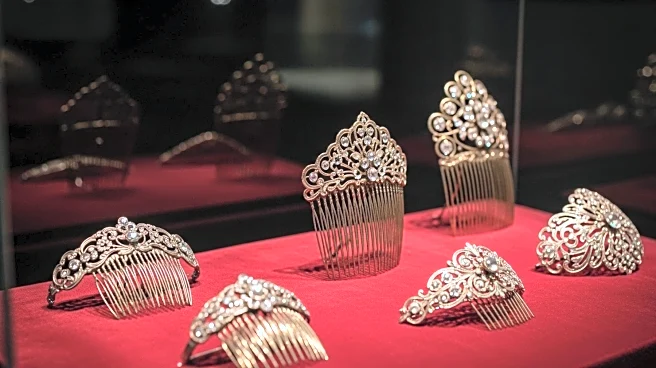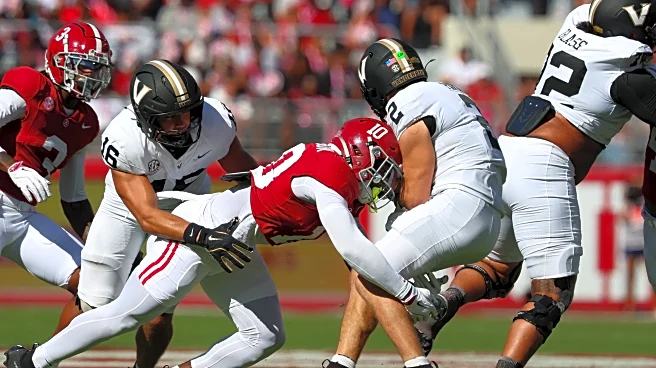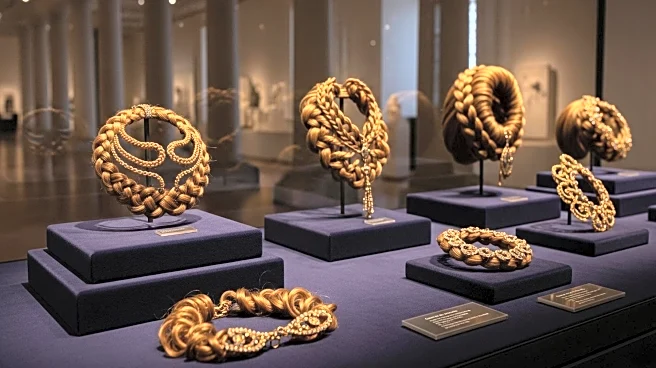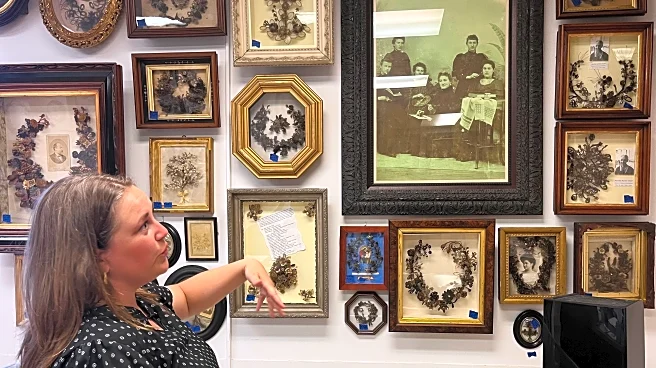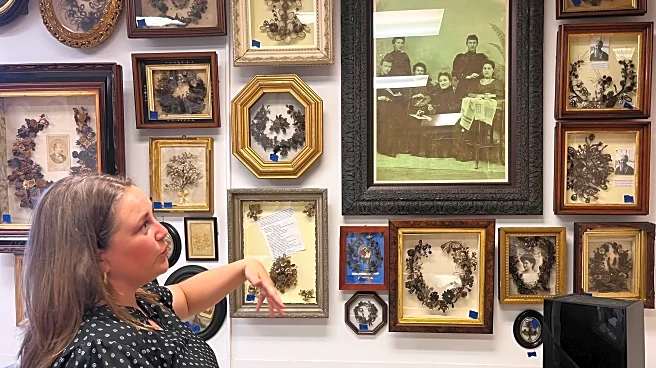What is the story about?
What's Happening?
Leila's Hair Museum in Independence, Missouri, known for its unique collection of hair art, has closed following the death of its founder, Leila Cohoon, last November. The museum housed over 3,000 pieces, including hair wreaths and jewelry made from human hair, some purportedly from historical figures like Marilyn Monroe and past presidents. Cohoon's granddaughter, Lindsay Evans, is overseeing the distribution of the collection to various museums across the United States, including the Metropolitan Museum of Art and the National Museum of Women in the Arts. The museum attracted visitors from diverse backgrounds, including celebrities like Ozzy Osbourne, and served as a testament to the art form that peaked in the mid-1800s.
Why It's Important?
The closure of Leila's Hair Museum marks the end of a unique cultural institution that preserved a largely forgotten art form. Hair art, which was popular in the 19th century, represents a historical method of memorializing loved ones, particularly women, who were often the creators of these pieces. The rehoming of the collection to major museums ensures that this art form will continue to be appreciated and studied, highlighting the contributions of women to cultural history. The museum's closure also reflects broader societal changes in how we commemorate and remember the deceased, shifting from physical artifacts to digital memories.
What's Next?
As the collection is distributed to various museums, it is expected to gain new audiences and appreciation. Institutions like the National Museum of Funeral History in Houston are eager to incorporate these pieces into their exhibits, providing educational opportunities about historical mourning practices. The relocation of the collection may also inspire renewed interest in hair art, potentially leading to new exhibitions and scholarly research. Evans' efforts to preserve her grandmother's legacy may encourage other collectors to consider the historical significance of their collections and seek ways to share them with the public.
Beyond the Headlines
The museum's closure raises questions about the preservation of niche cultural artifacts and the role of private collectors in maintaining historical art forms. It also highlights the gender dynamics in art history, as hair art was predominantly created by women and often overlooked by larger institutions. The rehoming process may prompt discussions about the value of women's contributions to art and history, encouraging museums to diversify their collections and narratives.
AI Generated Content
Do you find this article useful?
